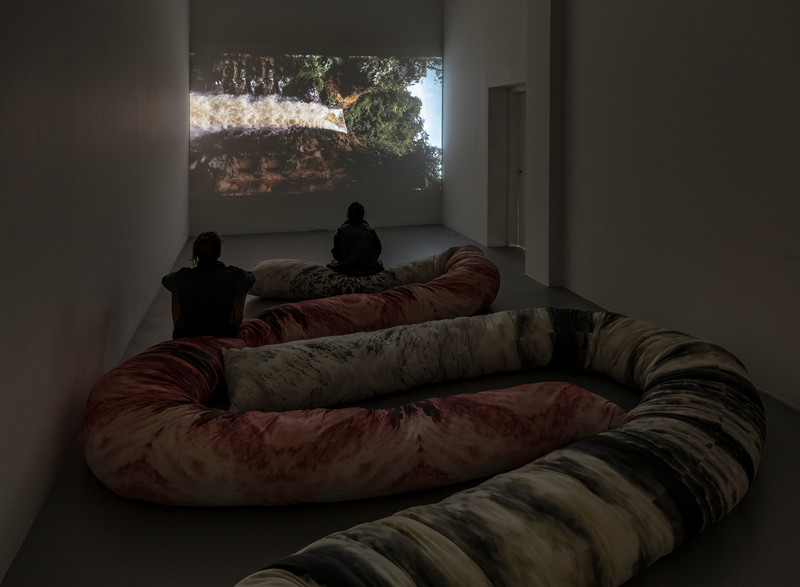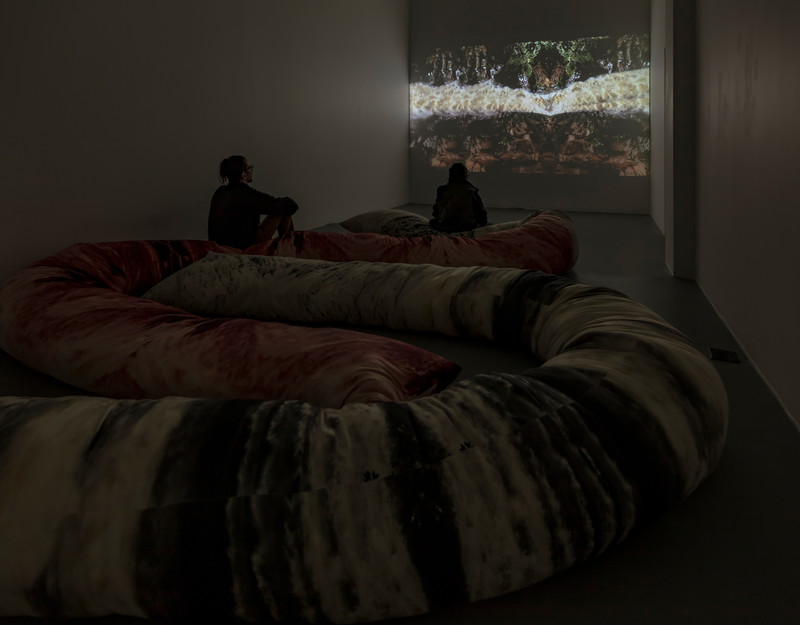


Foresight Filaments
Inhabiting the floor, these long snake-cushions invite visitors to lay upon them. They come from a pluriverse where processes of representation and of production of knowledge are not exclusively human. In many places of Latin America, the non-human evidences itself today: the fact that the earth is a subject with rights as determined in the constitutions or Bolivia or Ecuador, or that in Colombia the Atrato River has also gained legal rights, are institutional manifestations of recognizing the more-than-human. But if you look at the everyday of Indigenous and rural communities in the Andean regions, and the Amazon Basin, among others, you will find sacred worlds, where water, rocks, stones, emeralds, fish, corn, and other non/ human spirits are considered active social agents in the everyday socio-politics of the community.
The Colombian sociologist Arturo Escobar calls this Pensamiento de la Tierra (Thought of the Earth). It manifests through a vast array of popular movements across the continent that are based on their unique and constitutive relation to localized nature and to their territories. For these communities, the rivers, the mountains, even the forest are like family, and they take on active roles in the collective efforts of territorial resistance against extractivist industries. For example, a river can overflow to halt the construction of a dam, or the ground can tremble to complicate a mine operation. So actually, I think that there are non-human worlds happening today. They have been happening for millennia, but colonial and extractivist structures have made great efforts to erase them.

The Blackwood
University of Toronto Mississauga
3359 Mississauga Road
Mississauga, ON L5L 1C6
[email protected]
(905) 828-3789
The galleries are open. Hours of operation: Monday–Saturday, 12–5pm.
Facebook | Twitter | Instagram
Sign up to receive our newsletter.
The Blackwood is situated on the Territory of the Mississaugas of the Credit, Seneca, and Huron-Wendat.